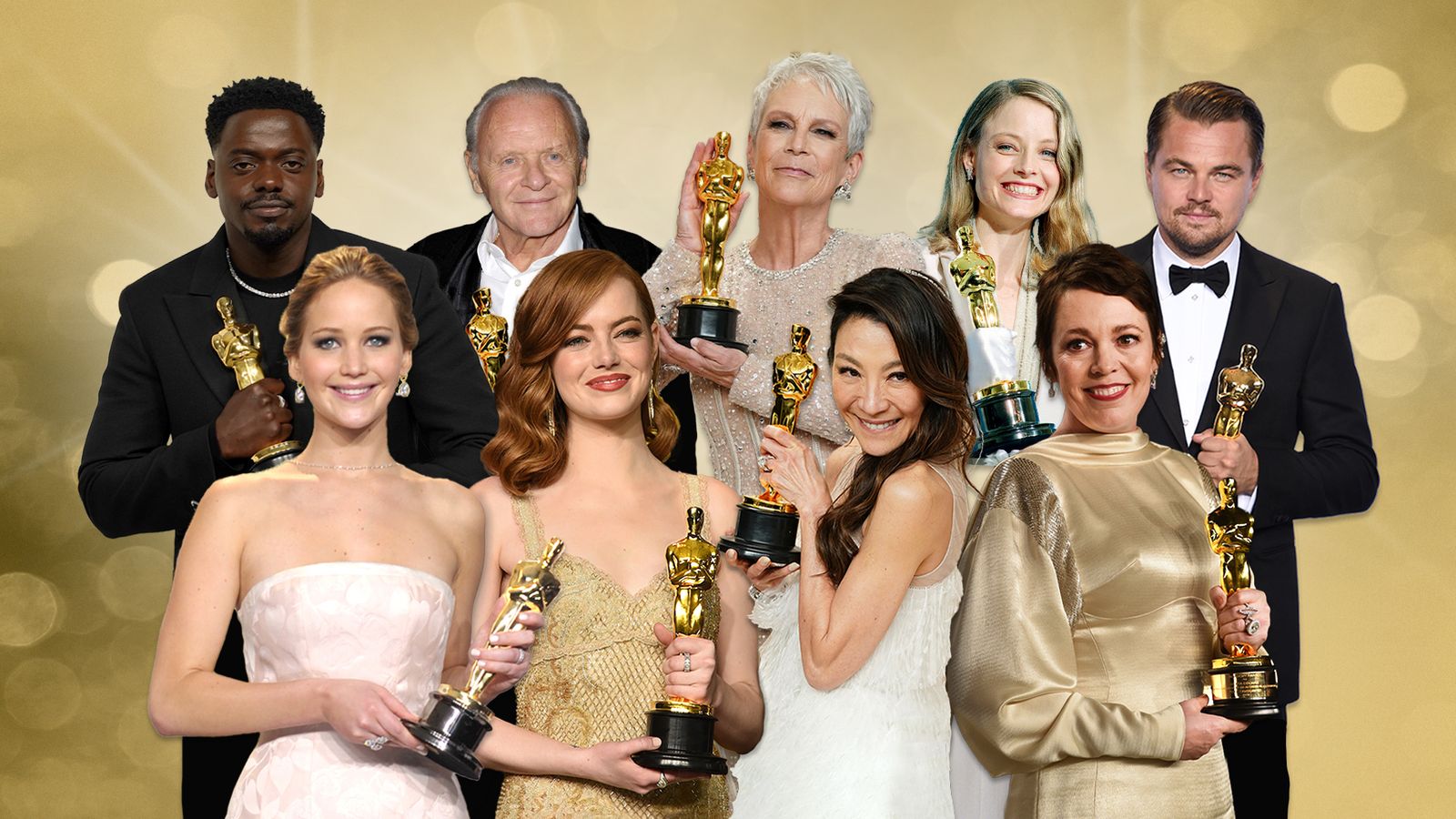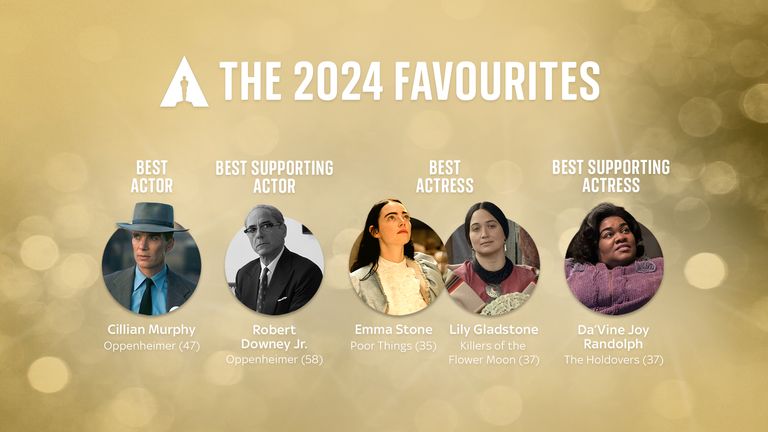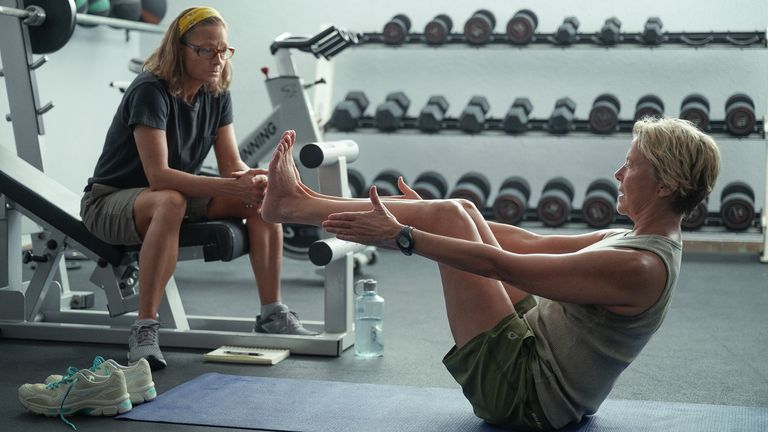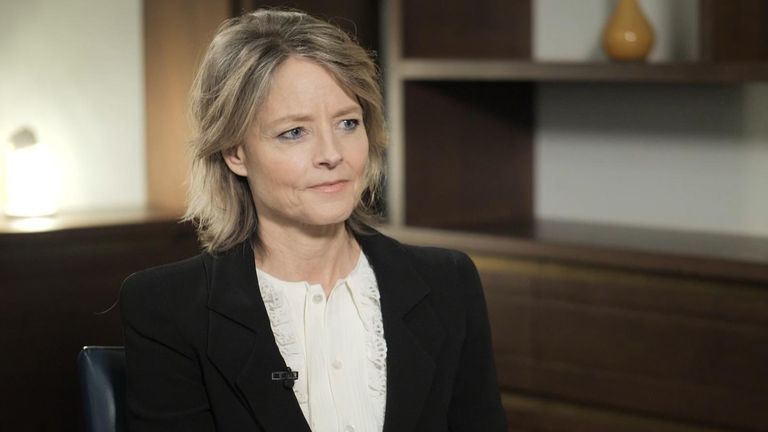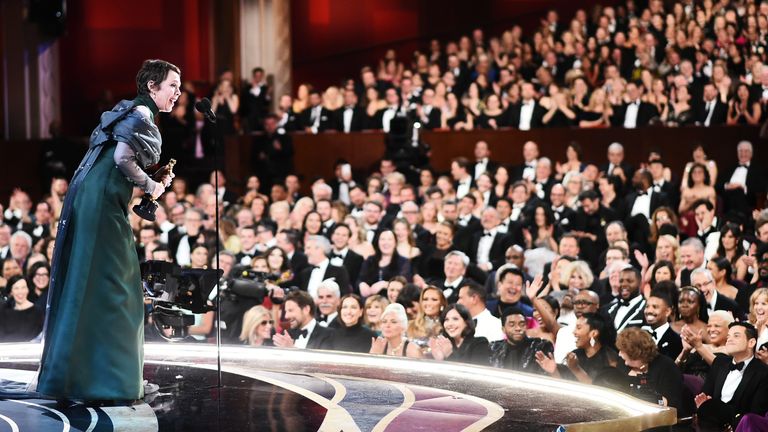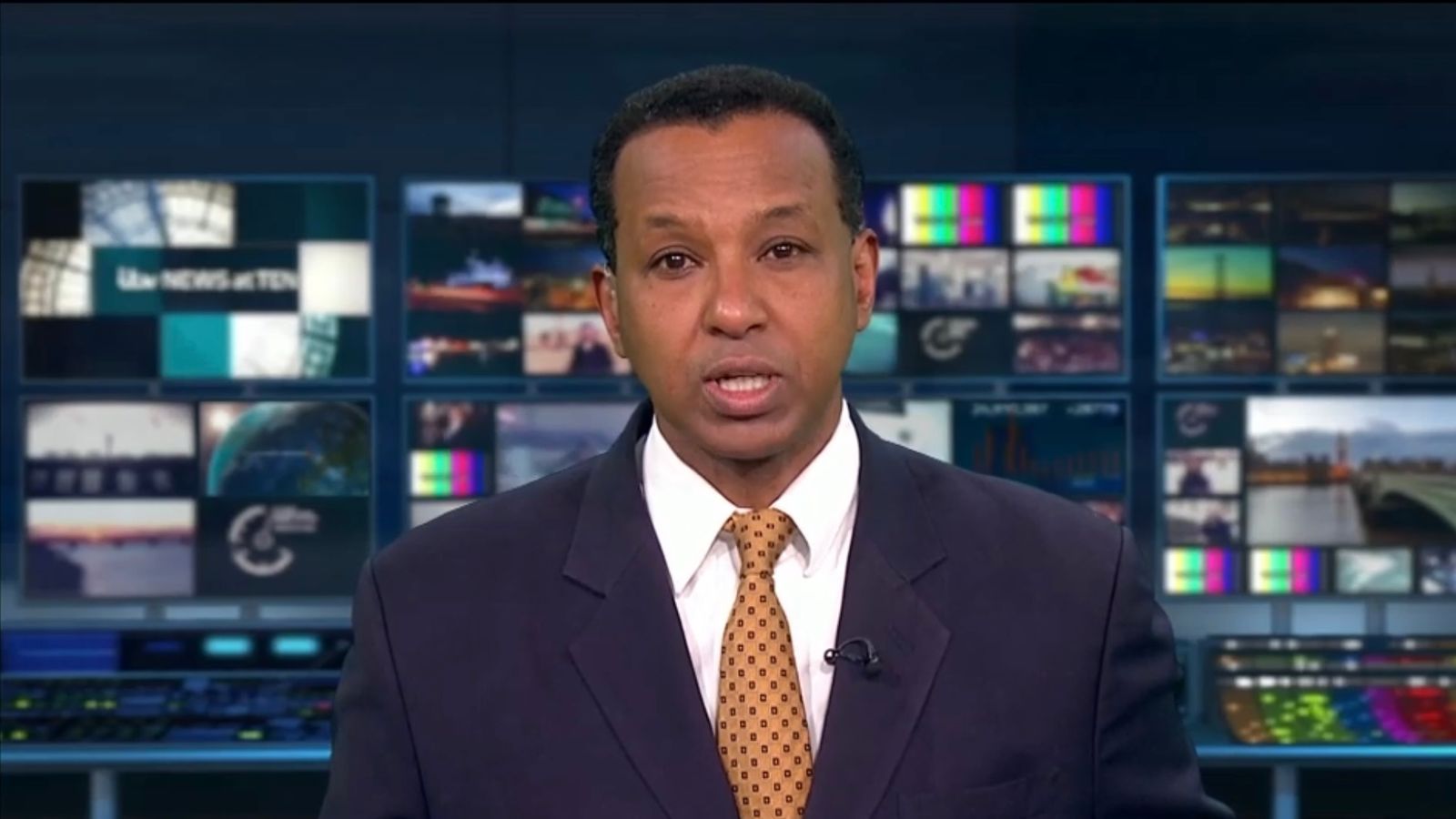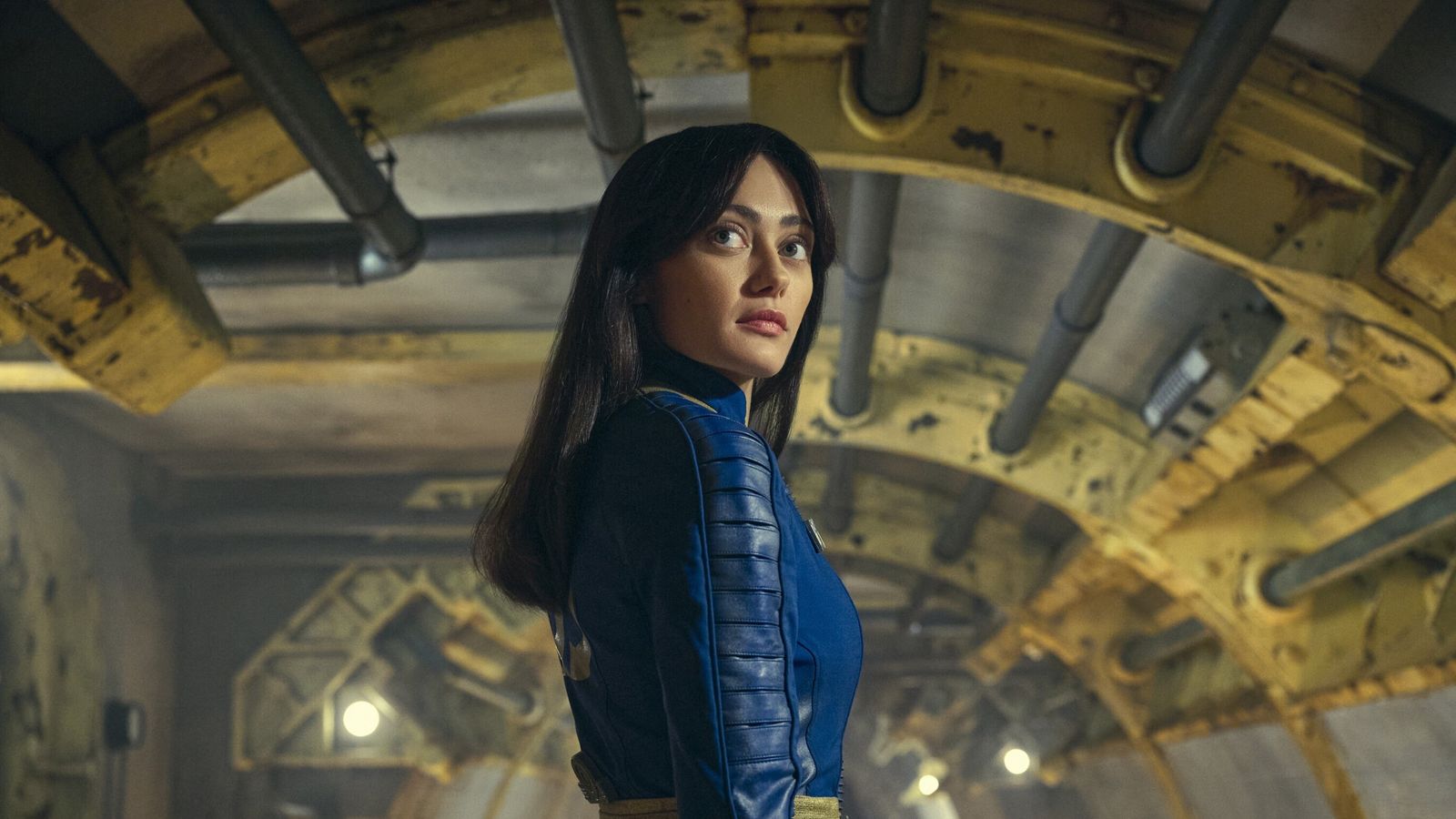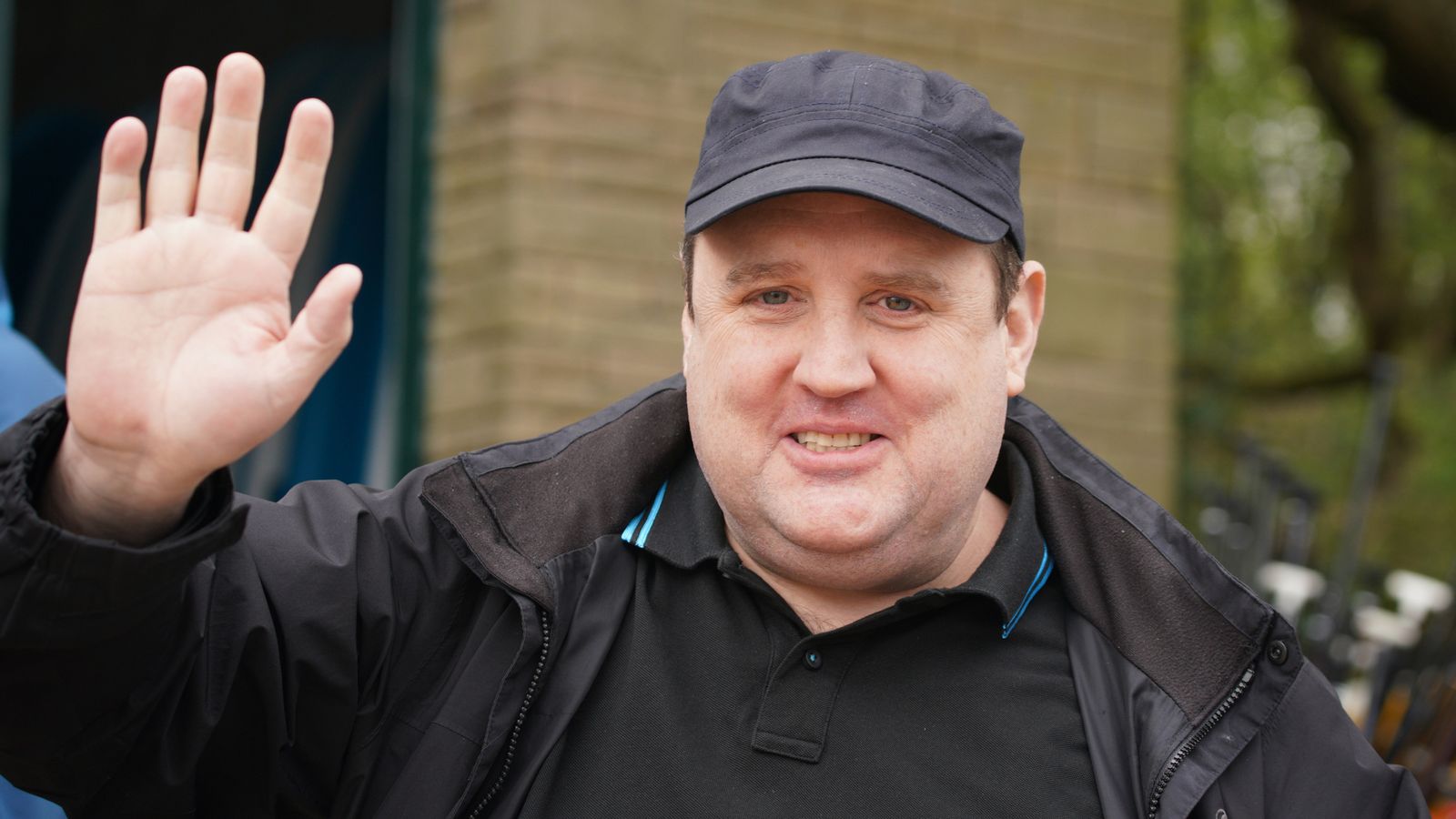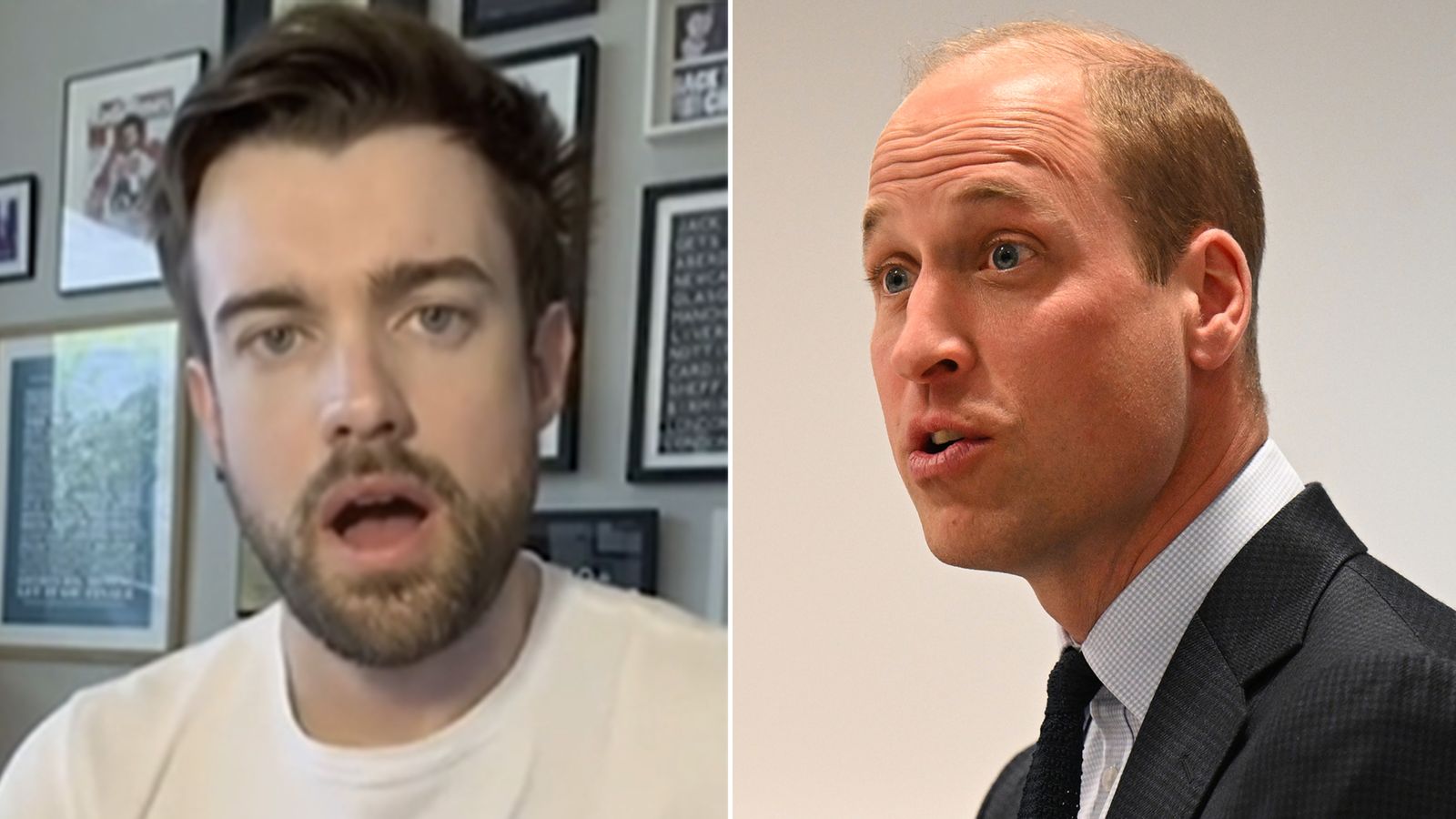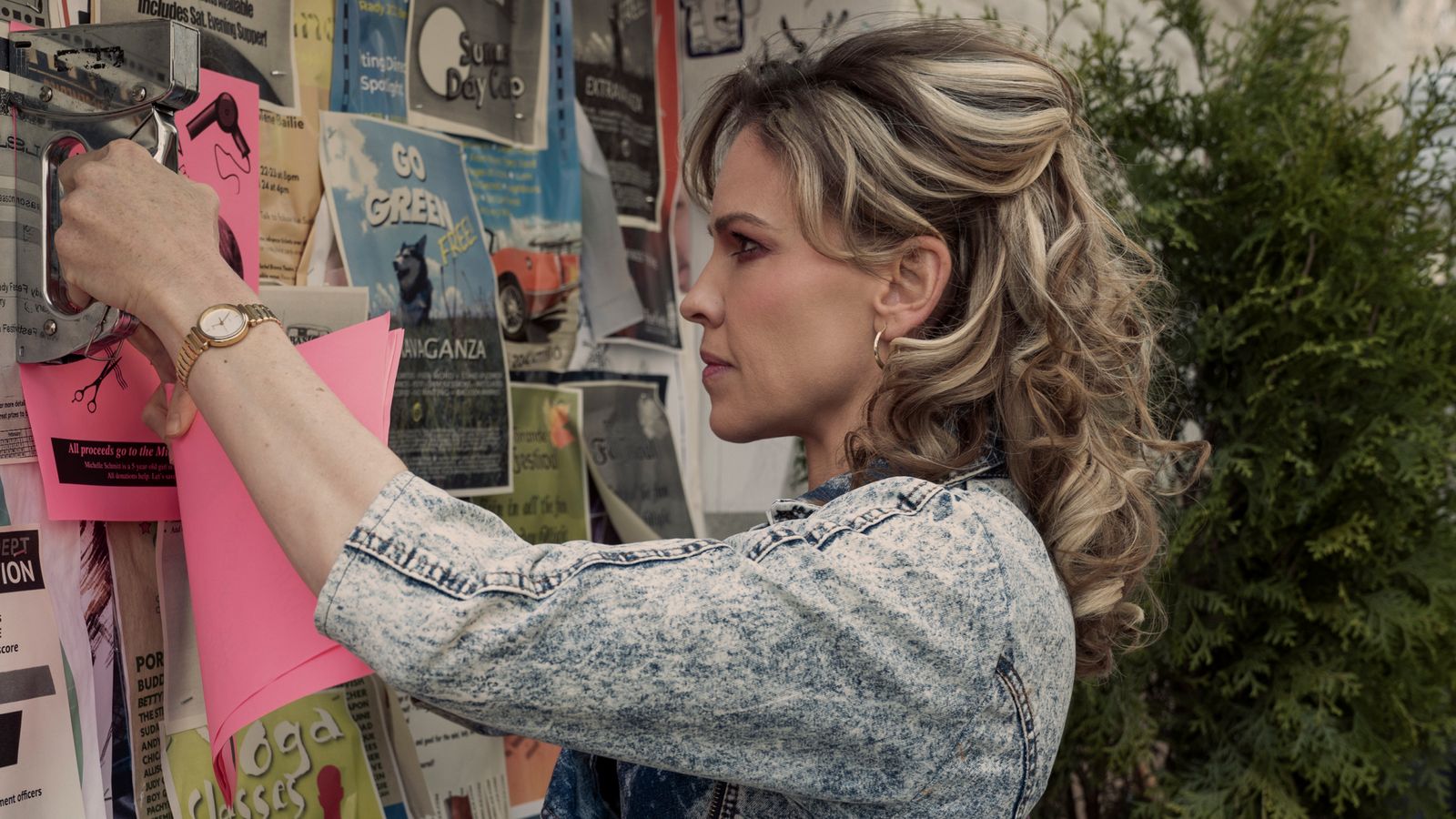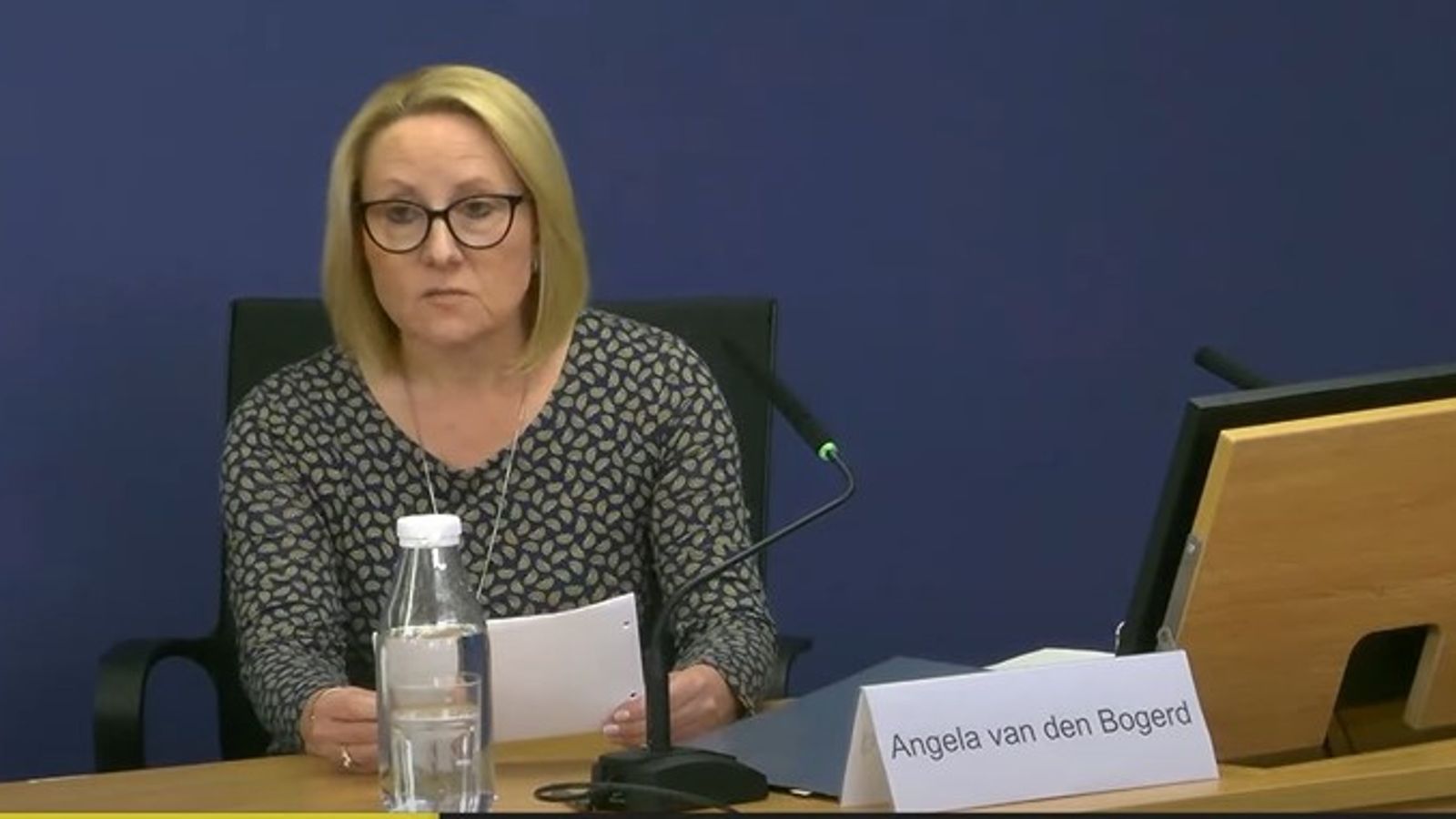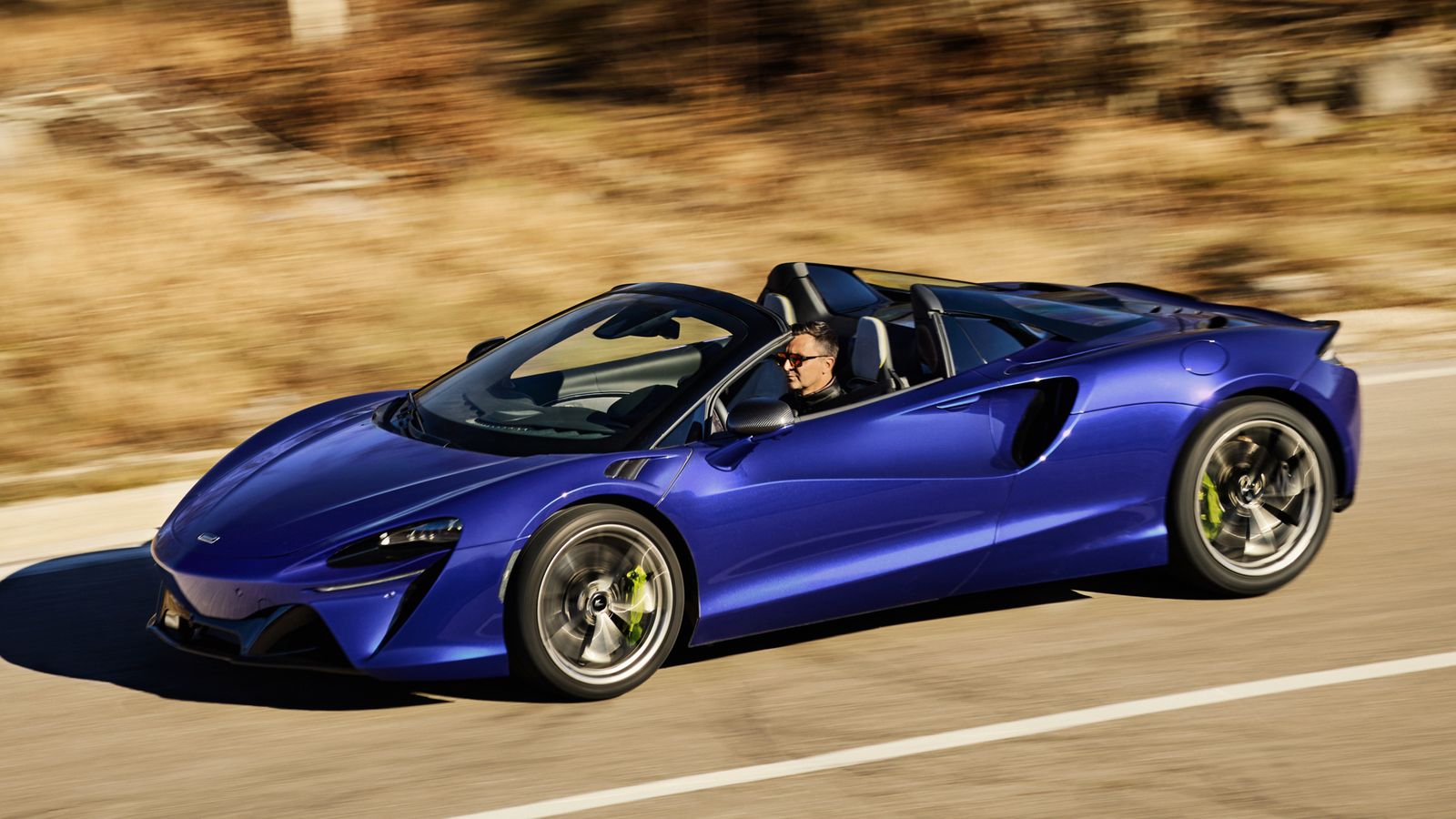
Goldie Hawn’s character in The First Wives Club summed it up best: “There are only three ages for women in Hollywood: babe, district attorney, or Driving Miss Daisy.”
That was almost 30 years ago, but we’re still having the conversation.
A land of airbrushed perfection, Hollywood has always had an issue with ageing – reflected in who wins what at the big awards. For decades, there has been an age disparity between Oscar-winning actors and actresses, with veteran male stars feted, while for women it has typically been the younger “ingenues” collecting the gongs.
There has been much talk of change in the industry in recent years – but is it actually happening?
Sky News analysis of the Oscars acting categories across 10-year periods shows there has typically always been a gap between the average age of female winners and male winners.
However, following the results at recent ceremonies – cemented with wins for Everything Everywhere All At Once stars Michelle Yeoh (now 61) and Jamie Lee Curtis (now 65) in 2023 – the average age gap closed for the first time last year.
What happens if you look at single years?
The graph above shows the average ages during 10-year periods to show when trends emerge, but taking single years into account the difference has often been even starker.
In 2000, for instance – the age gap between the then 25-year-old Hilary Swank (best actress) and 24-year-old Angelina Jolie (best supporting actress) was small. But in the equivalent male categories, the gap was almost 30 years – between Kevin Spacey (40 at the time, best actor) and Michael Caine (then 67, best supporting actor). This means that, across both the male and female categories that year, the average age gap was 29 years.
In 2013, the average age gap was 29.5 years, with Jennifer Lawrence (22 at the time) and Anne Hathaway (30) winning the female acting awards, and Daniel Day-Lewis (55) and Christoph Waltz (56) picking up the trophies for the men.
That’s not to say this doesn’t occasionally happen the other way around. In 1990, the acting age gap was 29 years but this time with the female average the higher number. The winners? Daniel Day-Lewis and Denzel Washington (then aged 32 and 35); Brenda Fricker (45) and Jessica Tandy (80) – for, interestingly, her performance in Driving Miss Daisy.
In 95 years of the Oscars, this is the only time the female average age has been more than 20 years higher than the male average age – something that has happened 14 times the other way round. Hawn really did have a point.
Perhaps unsurprisingly, the honouring of older men and younger women was all particularly prevalent in the 1990s and 2000s; in the 20 years from 1990 to 2009, the average age of female winners was higher than the male winners on just three occasions.
But in the last 10 years, there have been five years when the female average age has been higher, and five years when the male average age has been higher.
Equality!
Well, not quite. If things go as predicted this year then the two male winners will be on average about 16 years older than the two female stars – but then again, last year, the average age for the women was nine-and-a-half years more than that for the men.
It’s too early to say for definite that Hollywood has turned a corner – but the data certainly shows promise following years of conversations about the need for improving and diversifying roles for women of all ages on screen.
‘In the ’60s, I never saw another woman’
Jodie Foster was just 12 when she controversially starred as a child prostitute alongside Robert De Niro in Martin Scorsese’s Taxi Driver in 1976 – the film that earned the star her first Oscar nomination, for best supporting actress, at 14, and made her one of the youngest nominees ever.
She went on to win the Academy Award for best actress twice, for The Accused and Silence Of The Lambs in 1989 and 1992 – both before she was 30 – and is now, more than 30 years later, up for best supporting actress once again for her performance in Nyad. The film stars Annette Bening (nominated for best actress) as endurance-swimmer Diana Nyad, who at 60 decided to re-attempt the punishing 110-mile swim from Cuba to Florida which eluded her in her youth, and Foster as her friend and trainer Bonnie Stoll.
Read more:
Nyad’s real-life trainer on how Jodie Foster nailed the role
Foster, 61, says the industry has come “a long way” since she started out starring in adverts as a child in the 1960s. “I’ve been in the business for 58 years,” she tells Sky News. “When I first started in the ’60s, I never saw another woman… sometimes it was the lady who played my mom, or sometimes a make-up artist, but for the most part it was really just an entirely male environment.
“That’s changed, little by little by little, with [female] technicians coming in and female producers and now, really just recently for the United States, women directors. That was the last bastion of change, where we now have more women directors… I have seen that change, for sure.”
The actress has most recently been seen in the latest season of the hit series True Detective, in which she stars as a police chief alongside Kali Reis as a state trooper, investigating mysterious disappearances from a research station in Alaska.
After “playing strong women my whole life”, Foster says two female characters leading a show should not be headline news – but what has changed for women on screen is the way characters are developed. “The world of complexity hasn’t always been reserved for women. We were ‘the mother of…’, ‘the sister of…’, ‘the prostitute’, you know. It has taken a lot of work by women to flesh out female characters in the industry over time.”
‘You don’t pay us as much – but we still have some clout’
British actress Olivia Colman, who won the Oscar for best actress in 2019 for her portrayal of Queen Anne in The Favourite, and can currently be seen starring in mystery comedy Wicked Little Letters, says things are getting better but there is still a way to go – when it comes to roles and pay.
“Let’s fight for that journey,” she tells Sky News. “Over half the world’s population is women. We are interested in seeing ourselves reflected in stories, as all people are – wherever you’re from, you want to see yourself reflected in a story.
“I don’t stop watching telly once I’m 31, or films or stories or theatre, I still want to watch. And although you don’t pay us as much, we still have some clout. So – don’t underestimate women!”
‘More great roles – and not just for Meryl Streep’
Film critic Anna Smith, co-host of the Girls On Film podcast, says there has been a history of Hollywood casting younger women alongside older male stars.
“Whereas you can be a sexy George Clooney getting older, women – even in their 40s – can struggle to get work. I know some actresses that say when they reach a certain age, there’s a couple of decades where they’re a bit stuck because they either play the mum role or they have to wait and play the grandmother role. There aren’t as many meaty roles for women of all ages as there should be – and when they do happen, sometimes the older roles, they can be very cliched.”
However, Smith thinks that while there is still more work to be done to level the playing field, there has definitely been a shift in the last decade – and since the rise of the #MeToo and Time’s Up movements especially.
“We are seeing more great roles for older actresses and a variety – not just Meryl Streep, you know, there’s a little bit more out there for everybody. You look at Frances McDormand in Nomadland [in 2021]… she gives a wonderful performance and [it was] great to see that recognised at the Oscars and many other ceremonies.”
There is one thing she points out about Everything Everywhere All At Once, though. “The central role was originally conceived for Jackie Chan, and then they flipped it. And what you actually often find in recent years, when you get a film that is recognised well at the Oscars etc, when it’s a strong female character, a complex female character, it was often planned for a man…
“I have mixed feelings about that. On the one hand – great that people are open-minded enough now to go, hang on a minute, let’s just check our bias here, why is this role going to a man when it could go to a woman? That’s great, to challenge your bias, but at the same time, that does suggest complex roles for women aren’t being written specifically for women.”
So what needs to be done?
“I think there needs to be more investment in independent film and also people keeping an eye on the Hollywood machine,” says Smith. “Anyone working in the diversity area within big studios, I think, has got a real influence and the potential to make a change.
“The more people of different ages and ethnicities and backgrounds who are working in film and keep an open mind and are challenging their own biases, the more interesting and complex older characters we get. But I would also love to see people judging women less by their looks. I think there’s a real issue still in Hollywood, where some women feel pressured to have cosmetic surgery at a certain age in order to conform to some kind of unrealistic beauty standards.
“I think it’s a problem that is hopefully going away slightly, because you do look at the likes of Jamie Lee Curtis and she looks like an ordinary woman of her age, which is incredible. I would like to see more of that.”
In the Oscars acting results of recent years at least, it does feel like Hollywood has moved on from the ages of babe, district attorney and Driving Miss Daisy only.
Now Tinseltown just has to continue allowing women to grow old on screen, gracefully or otherwise – exactly the same as the men.

